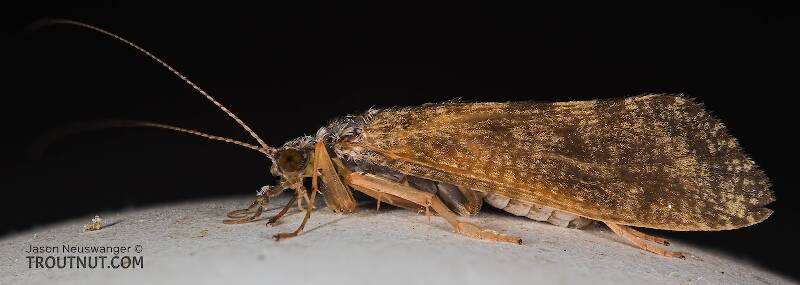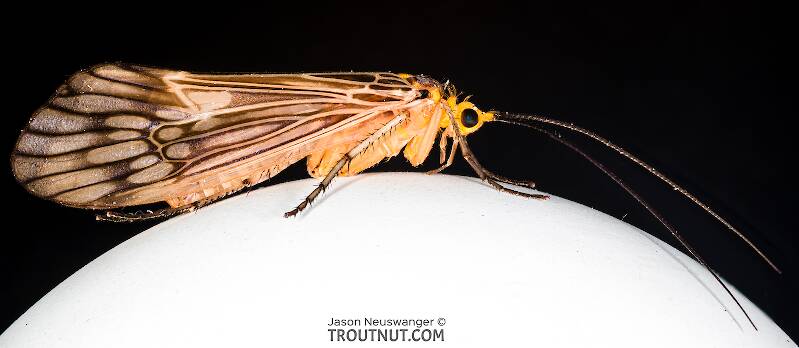
Blue-winged Olives
Baetis
Tiny Baetis mayflies are perhaps the most commonly encountered and imitated by anglers on all American trout streams due to their great abundance, widespread distribution, and trout-friendly emergence habits.
Featured on the forum


Troutnut is a project started in 2003 by salmonid ecologist Jason "Troutnut" Neuswanger to help anglers and
fly tyers unabashedly embrace the entomological side of the sport. Learn more about Troutnut or
support the project for an enhanced experience here.
Caddisfly Genus Hydatophylax (Giant Cream Pattern-Wing Sedges)
These are huge caddisflies. The larvae may be nearly an inch and a half long and build three-inch cases. Hook sizes 4-6 are appropriate for the pupae.
Where & when
Time of year : Late May to fall in the East; August to October in the West
Preferred waters: Medium to large streams
In 69 records from GBIF, adults of this genus have mostly been collected during June (46%), July (22%), May (19%), and August (7%).
In 14 records from GBIF, this genus has been collected at elevations ranging from 33 to 2740 ft, with an average (median) of 2008 ft.
Genus Range
Egg-Laying behavior
The egg-laying adults are not important.Larva & pupa biology
Diet: Woody debris
Current speed: Slow
Specimens of the Caddisfly Genus Hydatophylax
1 Female Adult

I had some trouble working through the genus key for this one because I'm not great at interpreting caddis wing venation. Fortunately, figure 19.707 in An Introduction to the Aquatic Insects of North America (Fifth Edition) shows the distinctive color pattern of the striking forewings on Hydatophylax argus, which is a perfect match for the pattern as well as venation. As there are no other species in that genus in this area, I can be pretty confident in the species ID.
Start a Discussion of Hydatophylax
References
- LaFontaine, Gary. 1981. Caddisflies. The Lyons Press.
- Merritt R.W., Cummins, K.W., and Berg, M.B. 2019. An Introduction to the Aquatic Insects of North America (Fifth Edition). Kendall/Hunt Publishing Company.
- Swisher, Doug and Carl Richards. 2000. Selective Trout. The Lyons Press.
Caddisfly Genus Hydatophylax (Giant Cream Pattern-Wing Sedges)
Taxonomy
Species in Hydatophylax: Hydatophylax argus, Hydatophylax hesperus
2 species (Hydatophylax variabilis and Hydatophylax victor) aren't included.

